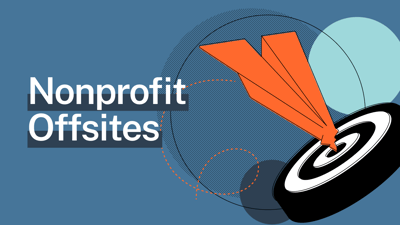The Pandemic is Accelerating How Nonprofits Adapt to Structural Trends

In April 2020, Microsoft CEO Satya Nadella observed, “We have seen two years’ worth of digital transformation in two months” and the results of those investments will persist long after the crisis.
The pandemic is accelerating how nonprofits adapt to structural trends, both new and existing. While temporary trends such as transitioning from in-person events to virtual fundraisers have emerged, prudent leaders are adjusting how their organization can evaluate growth opportunities and reposition themselves to emerge from the global pandemic with a business model aligned for the future.
Before reallocating your capital, evaluate your growth opportunities and sketch out how you will modify your business model to take advantage of structural changes.
Below, we’ve outlined a process for adapting your nonprofit’s business model to the new reality. It starts with understanding how changes in behavioral habits will likely grow or contract as a result of the pandemic.
For example, we’re spending more time at home resulting in a decrease in marketing and fundraising tactics that rely on in-person engagement, such as commuter-heavy mediums like radio and podcasts and fundraising events like galas and training.
Simultaneously, we see potential increases in the effectiveness of paid digital and peer-to-peer texting, as the former takes advantage of increased screen time and the latter addresses a thirst for personal connection. In summary, identify how these behavioral habit shifts will impact your nonprofit’s business.
Once you’ve identified specific business opportunities to likely grow or contract as a result of the pandemic, determine how much capital should be allocated to amplifying the growth areas. To do this, categorize which trends existed before the pandemic, which have emerged since, and which are temporary versus lasting.
Undoubtedly new trends have emerged from the pandemic, while some existing trends accelerated. For years, nonprofits have seen donors shift from one-time gifts to recurring monthly donations. This is an existing trend that has experienced a temporary acceleration in the pandemic. Meanwhile, artificial intelligence-driven marketing has emerged as an area for innovation as many nonprofits look to deliver highly personalized content across channels.
Leaders like yourself are taking the time to evaluate shifts in the way people spend their time and money and the influence it has on the way they market, fundraise, and deliver programs and services. They are reevaluating how they deliver value and achieve their mission. This may mean temporary or permanent changes in who they partner with, who funds their nonprofit, and how they communicate impact.
One of our cultural principles here at CauseMic is success is not final. We’ve helped some of our most successful and establish nonprofit clients evaluate and respond to the pandemic. This takes a willingness to abandon what’s worked in the past in order to gain an advantage during an uncertain time.
The pandemic is changing human behavior and it’s likely that some of those changes will stick. The nonprofits who will emerge from the pandemic stronger and better positioned to deliver value to their beneficiaries and constituencies are those that quickly spotted changes in human behavior, modified their business model to reflect them, and were willing to make investments for the future.
Our goal is to help you rapidly scale revenue. We’ve helped hundreds of nonprofit executives build and deploy growth systems that focus on your people, process, and technology. If you’re ready to learn how, check out our Nonprofit Rapid Growth Framework to learn what it takes to scale.




